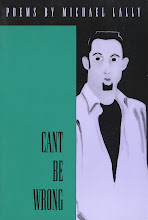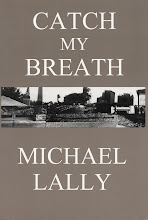
When I fall in love with a book, I want to read everything that writer has published. That was the case with Irene Nemirovsky when I first discovered her, along with a lot of other readers, a few years ago when her never before published last novel, SUITE FRANCAISE, came out first in France, where it was a sensation, and then in a terrific English translation by Sandra Smith.
Part of the sensation was the incredible story of the author and the book. Nemirovsky was a Russian exile, part of the exodus of so-called "white Russians" who fled the Bolshevik revolution and its aftermath. She was a child of wealth traveling to France many times before the 1917 Russian revolution.
But she was also Jewish. When she was only a toddler she was hidden by the family cook during a progrom. She was born in 1903 so was old enough to remember the 1917 revolution. Her family moved to St. Petersburg in 1913 but when the events of '17 occurred and she witnessed some of the atrocities and fighting, the family fled to Moscow and back to St. Petersburg.
Eventually they were able to make it into exile, first to Finland, then to Sweden and eventually France. By her early twenties, she was already publishing her fiction, and by her late twenties was already a French literary sensation, especially after publication of her best known and most controversial early work, the novel DAVID GOLDER.
Controversial because some see her treatment of the title character as antisemitism, despite her own Jewish heritage, while others see it as one of the great realistic novels of the time, or all time. It was a great success and was made into a movie and a play. She indulged in the usual Jazz Age antics, enjoying her literary success and fame, but continued to pour out novels and short stories based on the events she had experienced or witnessed among the Russian Jewish exile community, and back in Russia, as well.
She married another Russian Jewish exile and they had two daughters, but after the Germans invaded France and took Paris, they were forced to go into exile again. They converted to Catholicism, which some see as an attempt to avoid the anti-Jewish laws and round ups. They weren't French citizens, despite the fact she'd lived there for two decades by 1939, but she had faith that things would work out.
In their travails as refugees fleeing Paris and the oncoming Germans, she continued to write, filling a leather bound book that was in a suitcase the girls took with them when they were saved from the Germans, but their parents weren't. Irene and her husband both were arrested, though at two different times, and both died in Auschwitz. He in a gas chamber, her of typhus.
But she wrote and was even still getting published right up until her death. And when the girls grew older, they were aware of the leather bound book they assumed was a diary, but neither wanted to delve into that traumatic period. Finally after one of the sisters passed away in old age after the turn of the century, the other received the old suitcase and going through it took out the leather bound diary and began reading only to discover it was actually a series of novels or novellas, meant to describe the panorama of the war in France and the German invasion and occupation with the idea of some conclusion being reached at war's end.
The books were joined into one as Suite Francasie and published to much acclaim in France in 2004 and then here in 2006 when I first encountered it. In 2007 another unpublished novel based in the French countryside that she came to know so well during the family's flight from Paris was published, FIRE IN THE BLOOD, and I devoured that as well, even though it's a much lighter read than SUITE FRANCAISE.
That too was translated by Sandra Smith, as were the four novels that have now been published under one cover by Knopf's Everyman's Library. The novels include DAVID GOLDER, THE BALL, SNOW IN AUTUMN and another big sensation for Nemirovksy early in her career, THE COURILOF AFFAIR.
Critics are a little condescending to a few of these novels, but to my taste they are all significant and rewarding reads. DAVID GOLDER tells the story of a wealthy white Russian exile, a Jewish man whose wife and daughter seem to only care about the lifestyle he provides for them. He's an amazingly complex character to my mind, not at all the stereotype or two-dimensional stand in for her father or whoever she modeled it on and obviously grudgingly admired for the qualities that this kind of self made man embodied, but at the same time judged for his single mindedness and cynicism.
THE BALL is more of a novella, an adolescent revenge fantasy that Nemriovsky makes as real as any Tolstoy or Turgenev novel. As with DAVID GOLDER, THE BALL is surprisingly contemporary. the psychology and brutal honesty Nemirovsky articulates through her characters' thoughts and actions is so raw and uncompromising, it's almost like she was the first punk novelist. THE BALL could almost be included in grrrrrl power history as some kind of proto-confrontational precursor.
SNOW IN AUTUMN is another story of Russian exile, this one more deeply evocative of the domestic turmoil created by the Revolution and the subsequent civil war between the "whites" and the "reds." It's told from the perspective of an old servant, a peasant woman seen often in Russian literature as a minor character or less. But this time she's at the center of the story, giving it an earthy grounding that cannot be ignored or dismissed. It's a compellingly told tale that makes old news seem new.
And the last novel in this collection, THE COURILOF AFFAIR, treats the revolution this time from the perspective of one of the most successful assassins on the revolutionary side. It's as coldly presented as all these books are (the later, posthumously published books seem much more romantic and the sentiment in them is much less angry and critical, more forgiving and accepting of human faults). If it was the only thing I'd read of hers I'd think, well obviously she thinks the revolutionaries were coldblooded killers driven more by rage or pathology or opportunity than love or truth or justice. But she treats the exiles and victims of the revolutionaries' acts just as coldly.
Not to say the books are cold or the stories, they are compelling and engaging and even enlightening, and I dug every one of them. She is still one of my favorite writers and I can't wait for more translations. All I mean is that she narrates these stories in a way that sometimes evokes tenderness and even love, but always does it in a way that we feel it for the characters rather than the narrator feeling it or doing anything to make it seem she cares what we think. It's a tremendous technical achievement to my mind, and one that only adds to the rewards all her writing give a reader, or at least this one.
if you like novels (I read more history and biography and reportage and letters and poetry and other incidental kinds of writing than I do novels anymore, but the discovery of the novels of Irene Nemirovksy and Roberto Bolano has given me as much pleasure in recent years as my youthful discoveries of William Saroyan and Jack Kerouac et. al.) than I would start reading Irene Nemirovksy's.
















3 comments:
I recently saw your post about reading Irène Némirovsky's works. I wanted to pass along some information about an exciting exhibition closing August 30 about Némirovsky's life, work, and legacy. I urge you to see Woman of Letters: Irène Némirovsky and Suite Française, at the Museum of Jewish Heritage —A Living Memorial to the Holocaust in New York City. The exhibition includes powerful rare artifacts —including the valise in which the original manuscript for Suite Française was found, as well as many personal papers and family photos. The majority of these documents and artifacts have never been outside of France. For fans of her work, this exhibition is an opportunity to really “get to know” Irene. Don’t miss this opportunity to learn more about this beloved writer! And for those who can’t visit, there is a special website devoted to her story www.mjhnyc.org/irene.
Although we are in the lazy days of summer, book clubs and groups are invited to the Museum for tours and discussions in the exhibition’s adjacent Salon (by appointment). It is the Museum’s hope that the exhibit will engage visitors and promote dialogue about this extraordinary writer and the complex time in which she lived and died. To book a group tour, please contact Chris Lopez at 646.437.4304 or clopez@mjhnyc.org. Please visit our website at www.mjhnyc.org for up-to-date information about upcoming public programs or to join our e-bulletin list.
Thanks for sharing this info with your readers. If you need any more, please do not hesitate to contact me at hfurst@mjhnyc.org
thanks for the lead Michael - i look forward to reading her - a subject near and dear to my heart since my grandmother was part of the exodus and lucky enough to end up in nyc ...
Excited about reading these books Lals. I read Suite Francais a couple of months ago and was blown away by her talent and of course her story.
Post a Comment